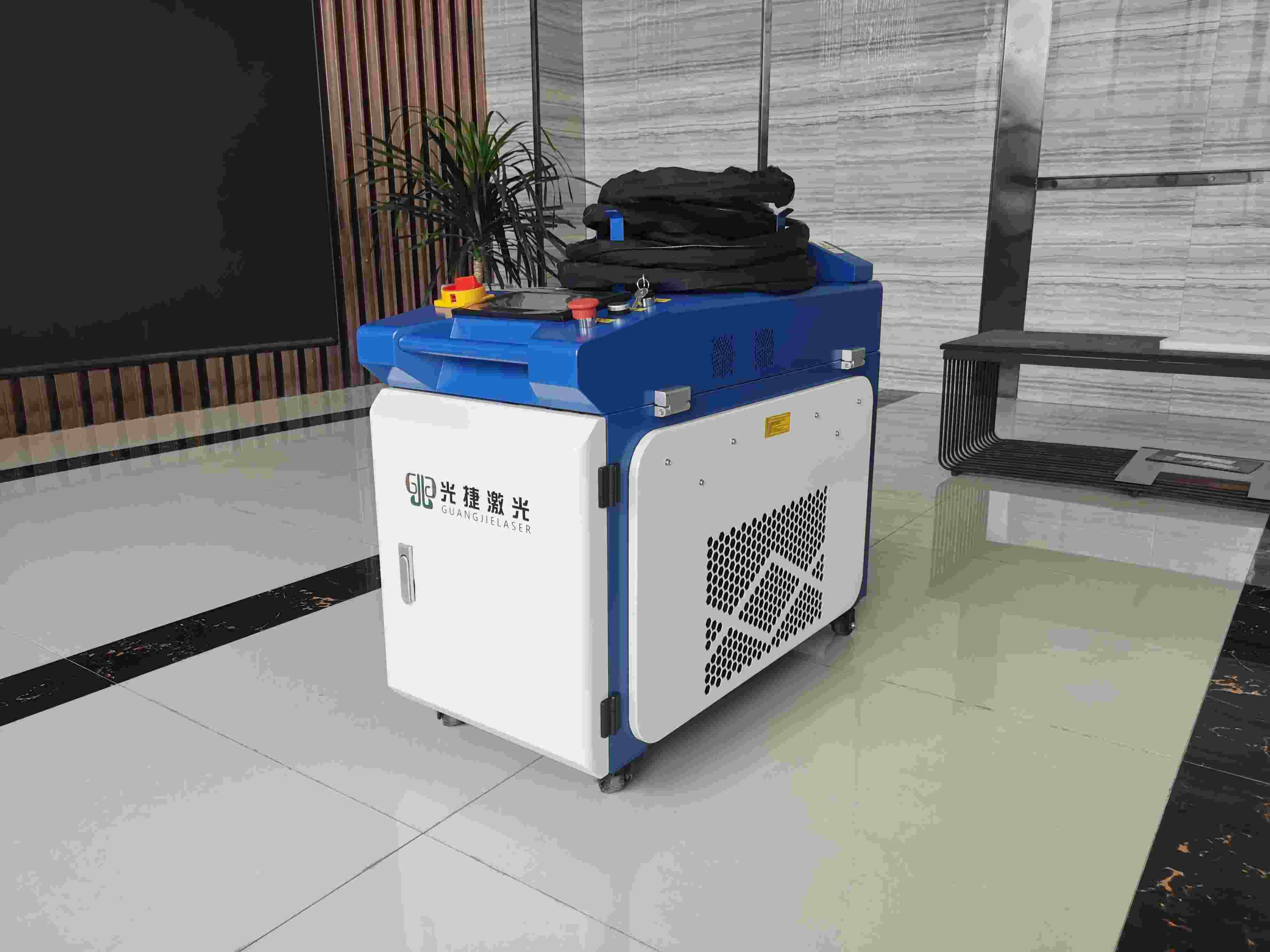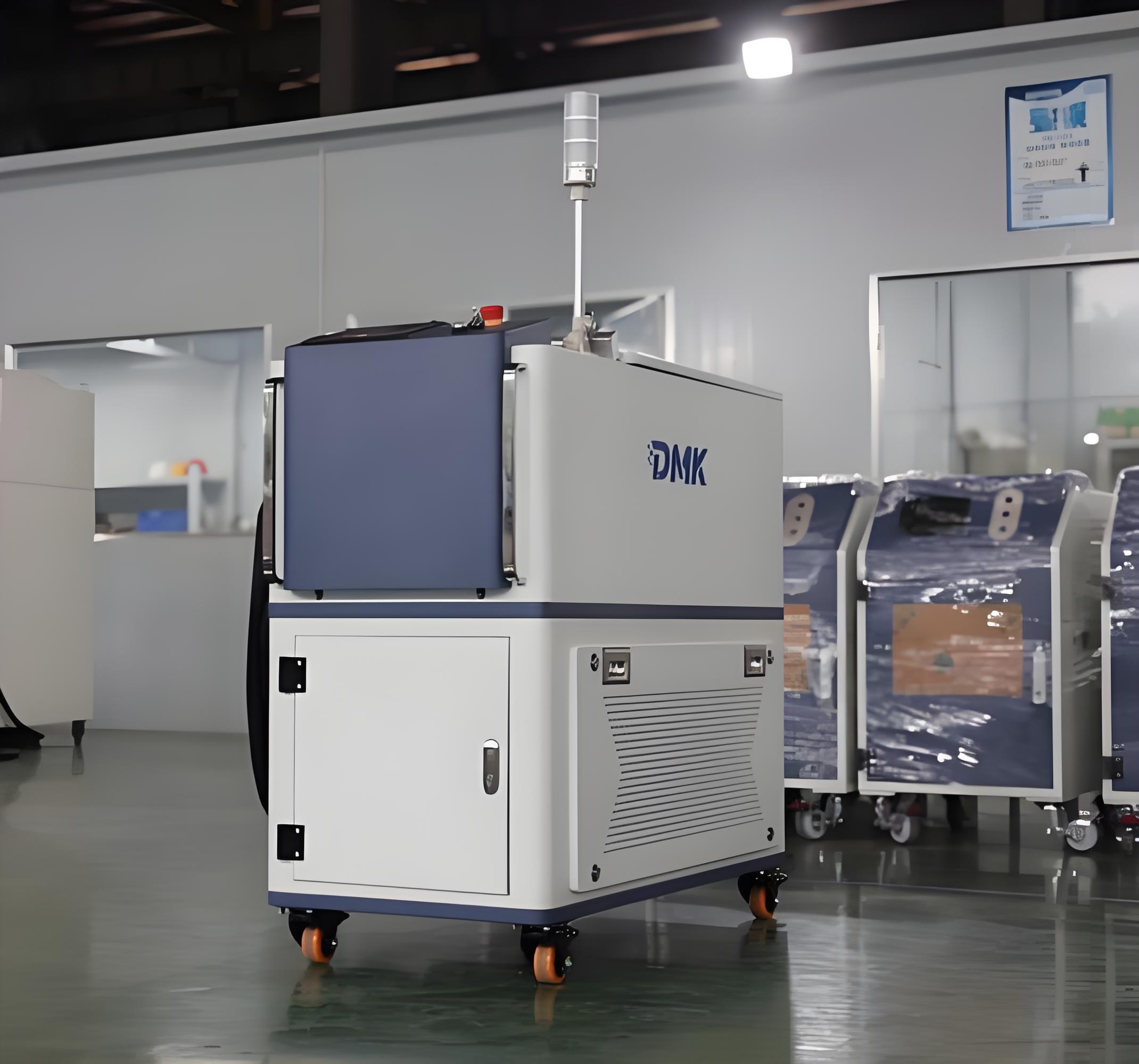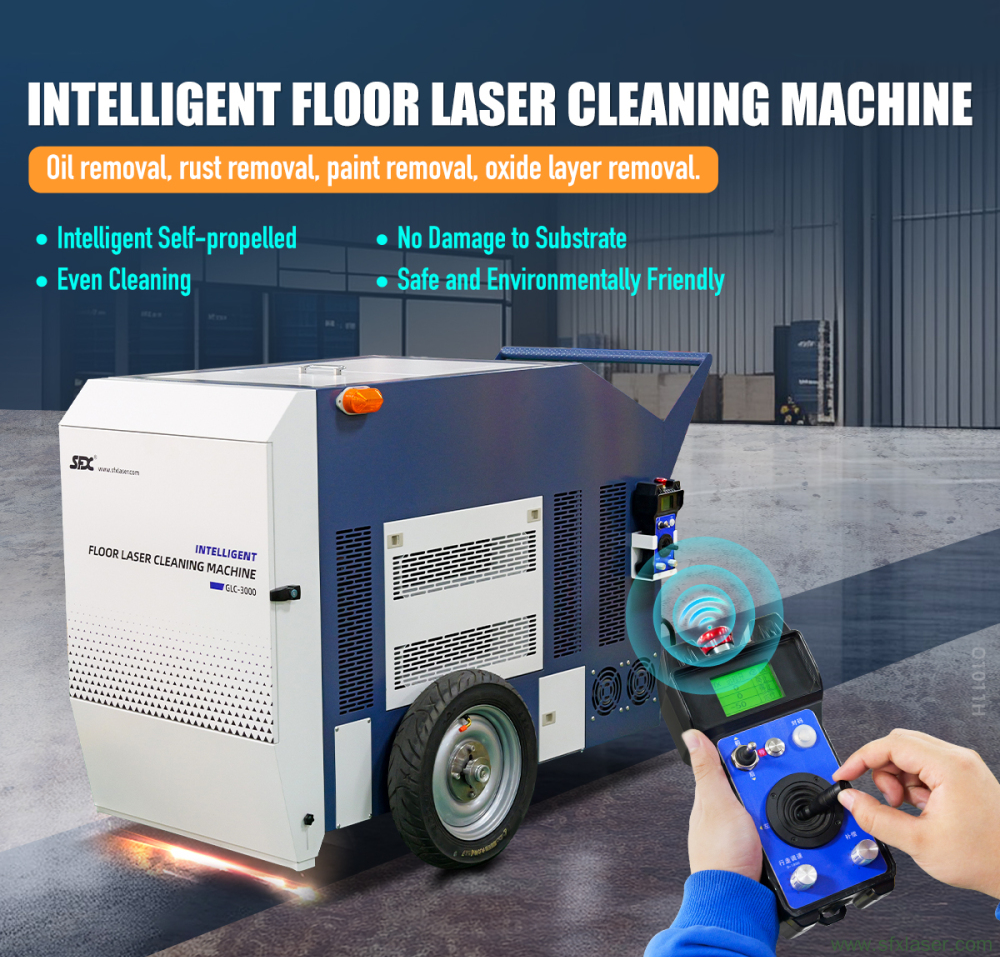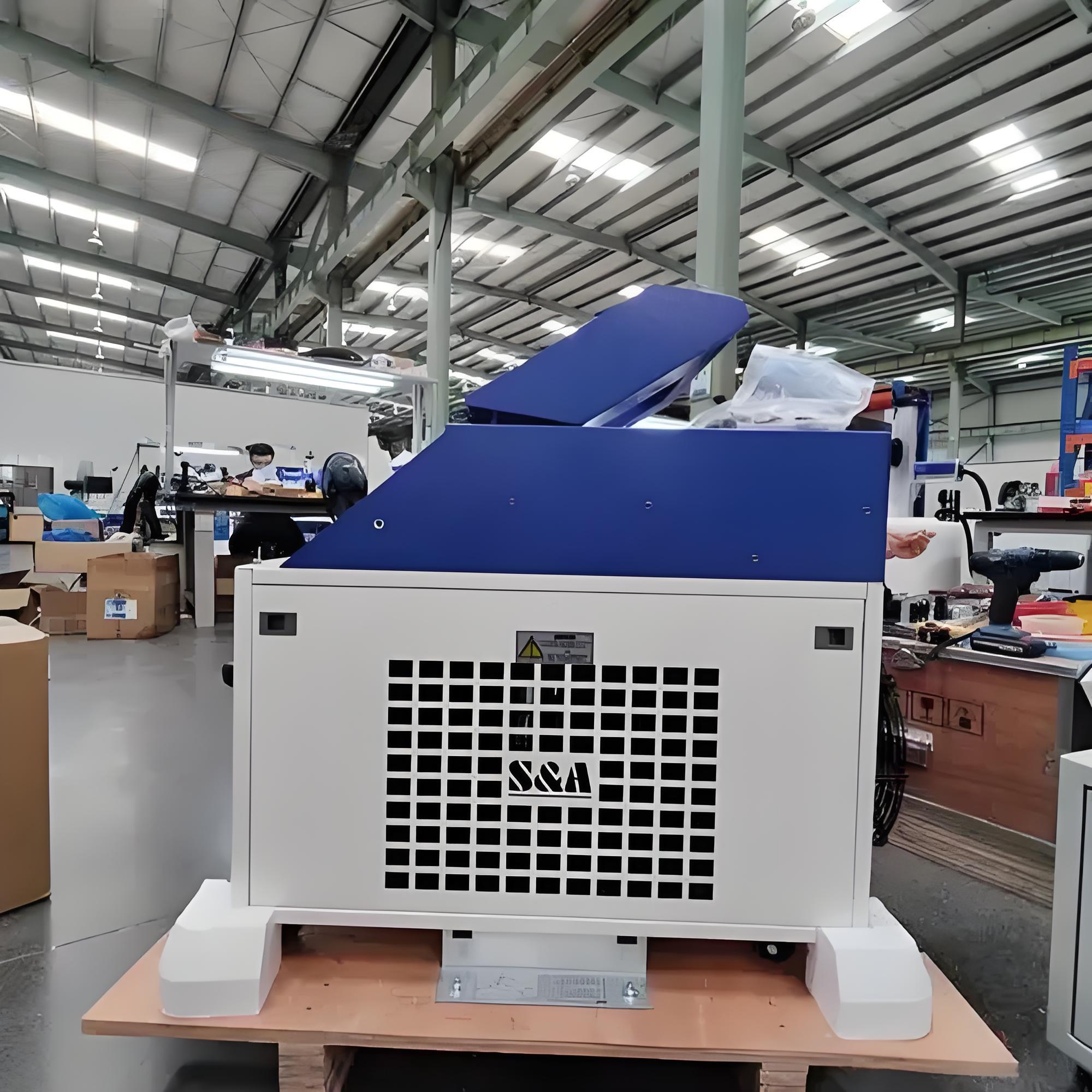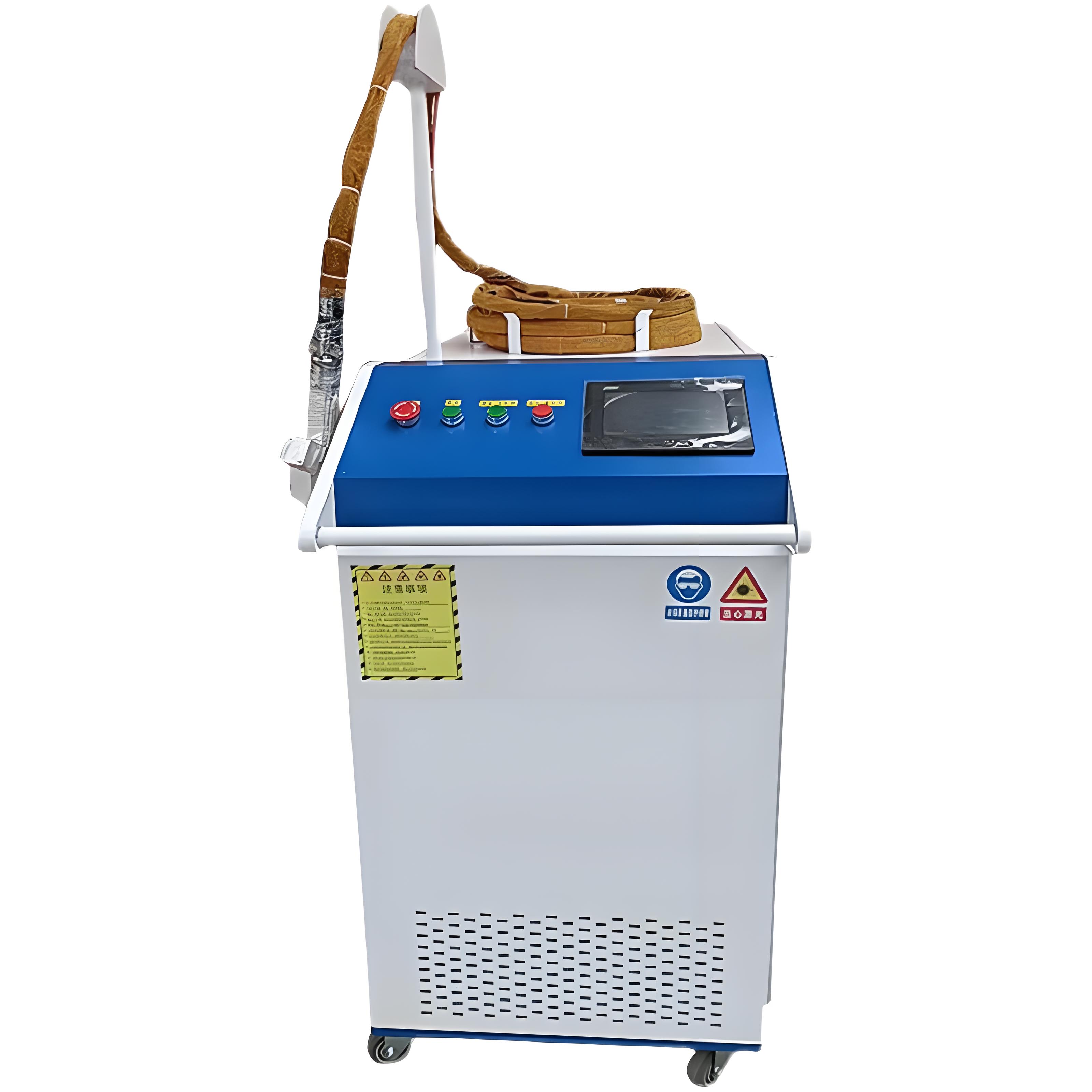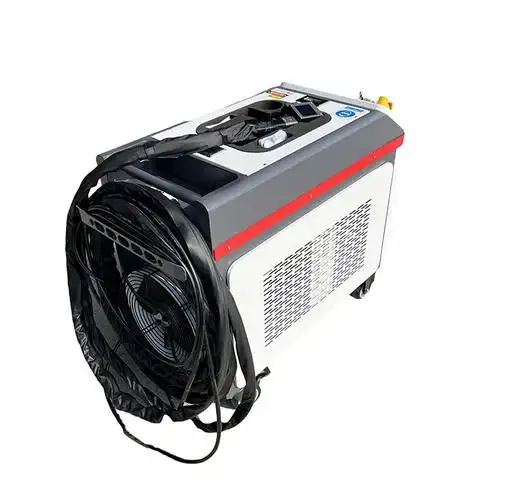Merchants often claim that a 1500W laser rust remover can clean an average of 60 square meters per hour, a 2000W one can clean 80 square meters per hour, and a 3000W one can clean 120 square meters per hour. These claims are highly subjective, or the selected rust layer standards are too low, which do not conform to the actual situation. So, how many square meters can a laser rust remover actually clean in an hour? We conducted experiments over multiple days. Using the rust layer shown in the following image as the standard, a 3000W laser rust remover can clean approximately 50 square meters per hour.
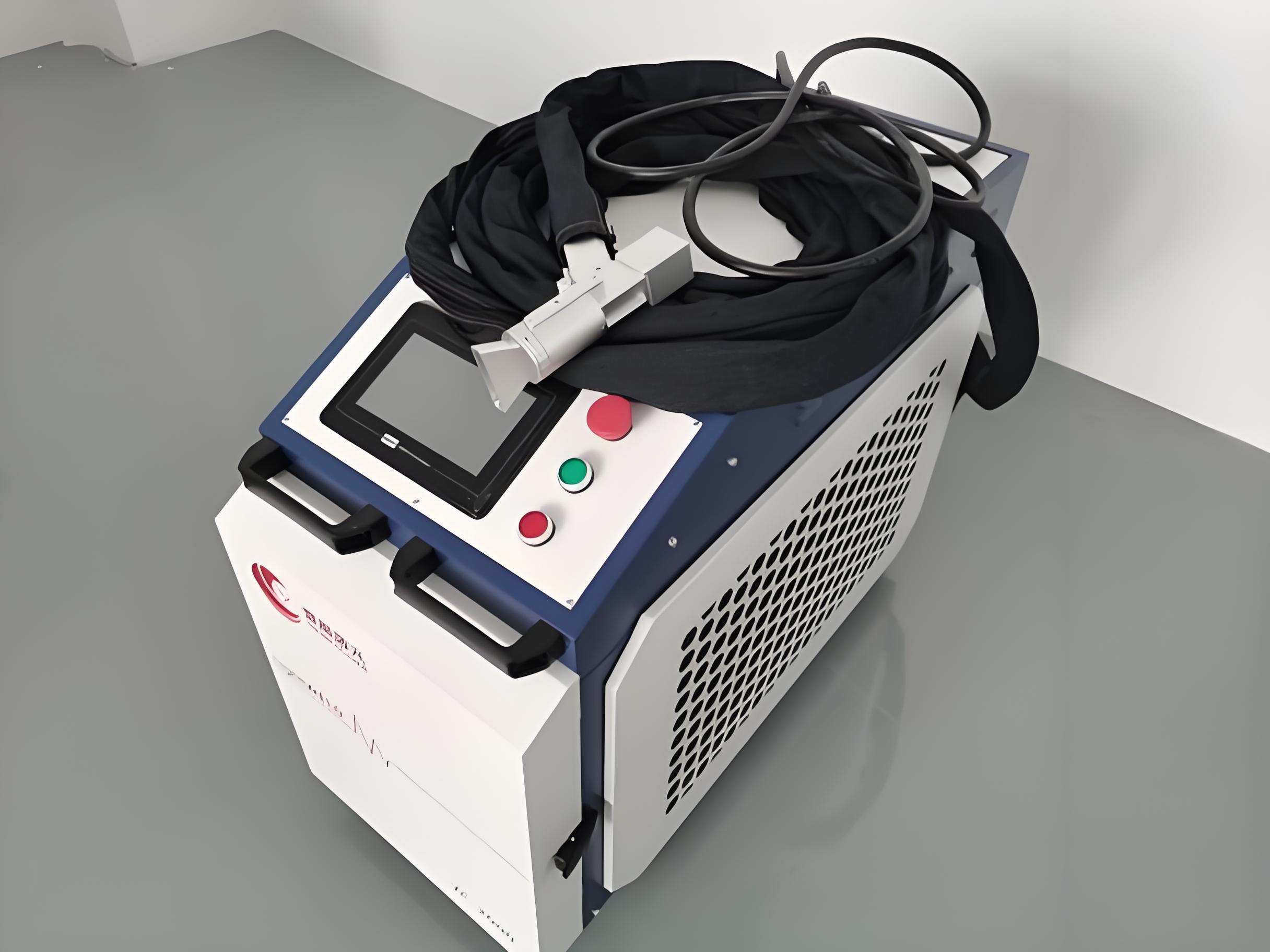
Then, how long can a laser rust remover work continuously each day? We tested multiple machines with the requirement of continuous operation for 8 hours to observe the failure rate and work efficiency during this period.
The first machine is a non-professional laser rust remover that is readily available on the market. This type of rust remover is mainly derived from the modification of laser welding machines, with 90% of its structure being the same as that of a laser welding machine of the same power, differing only in the gun head. It has a power of 2000W, with a laser selected from Hotspur and a chiller from Hanli. Nitrogen is used in the cleaning process, and the scanning width is 30 centimeters. Starting at full power, it suddenly stopped working after 3 hours of continuous operation, with a high-temperature alarm displayed on the screen. After waiting for 30 minutes, it restarted and worked for another hour before triggering another high-temperature alarm. The power was then adjusted to 90%, and it continued to operate until the full 8 hours were completed. The main issue with this machine was high-temperature alarms and frequent shutdowns.
The second machine is a three-in-one machine, meaning one machine can weld, cut, and remove rust. It has a power of 2000W, with a laser selected from Keplin and a chiller from Hanli. Compressed air plus an oil-water filter are used to provide gas during the cleaning process, and the scanning width is 8 cm. Starting at full power, it burned a protective lens within just 30 minutes. After replacing the lens and restarting, it burned another lens within less than 10 minutes. The oil-water filter was then replaced, but after approximately one hour of continuous operation, it burned another protective lens. The air compressor was removed, and nitrogen was used instead. After one hour of continuous operation, a high-temperature alarm was triggered. After waiting for half an hour, it restarted and triggered another high-temperature alarm after 40 minutes of work. The power was then adjusted to 80%, and the laser operated continuously for another 4 hours before triggering another high-temperature alarm. After cooling for more than ten minutes, it continued to work, barely reaching the 8-hour mark.
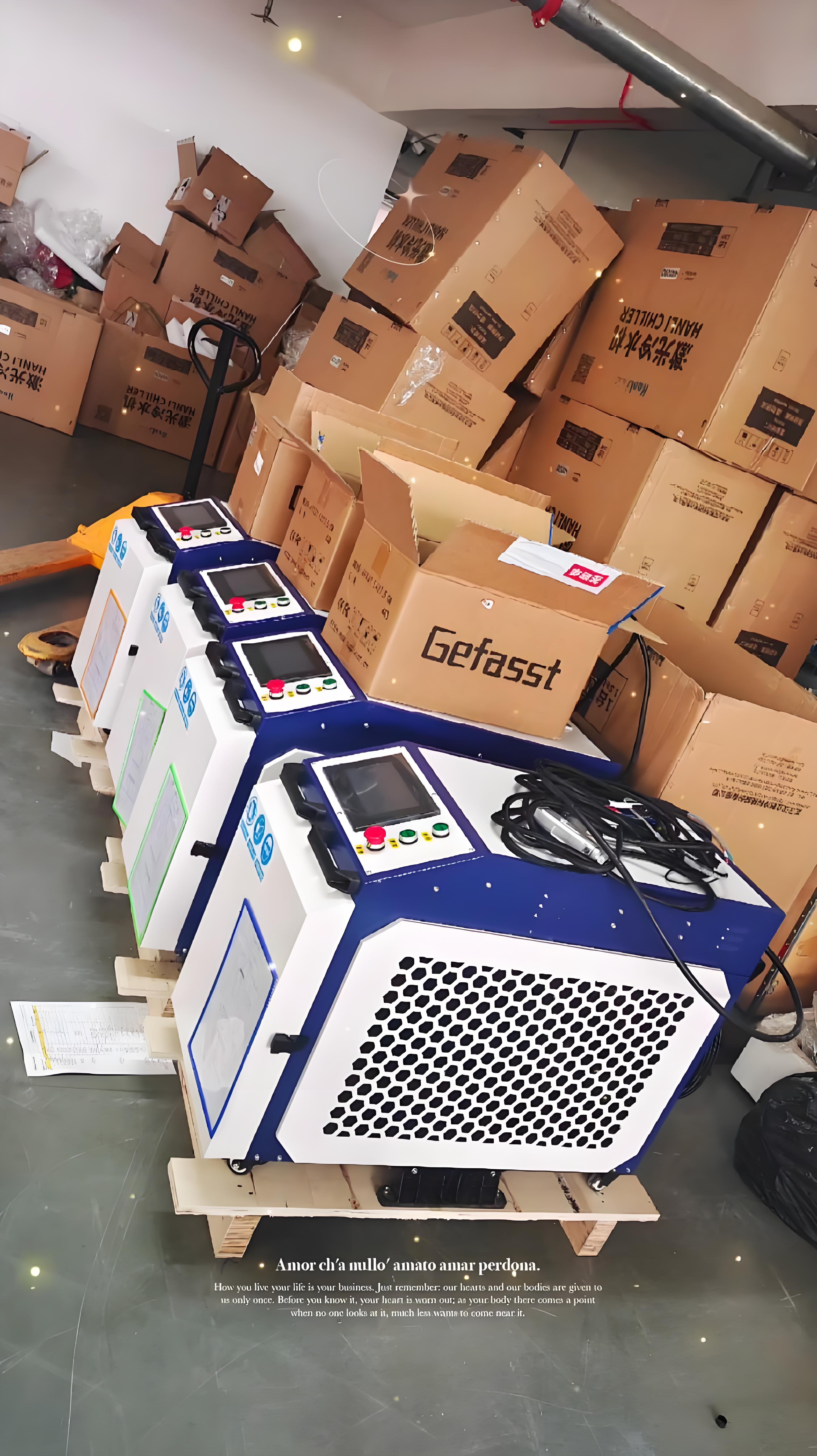
The third machine is also a professional laser rust remover. It has a power of 2000W, with a specially matched chiller, scanning head, focusing lens, and protective lens. Nitrogen protection is used, and the scanning width is 20 centimeters. Starting at full power, it operated continuously for 8 hours without any abnormalities. In fact, professional laser rust removers have undergone multiple practical applications and continuous optimization.
In summary, compared to laser welding machines, laser rust removal is characterized by high-power, long-duration operation, thus requiring higher-performance lasers and chillers. Laser rust removal sites are often dirty, with excessive impurities in the air. If an air compressor is used to supply gas, even with an oil-water filter added, it is impossible to filter out all impurities. As long as there is even a tiny bit of contaminant on the lens, the laser irradiation will cause the dust to absorb laser energy and instantly burn the protective lens. Although protective lenses are inexpensive, frequent shutdowns are frustrating. For laser rust removal, it is advisable to choose high-power machines. Machines with a power of 3000W or 6000W yield excellent results. A 3000W machine with a scanning width of 30 centimeters can clean approximately 50 square meters per hour. A 6000W machine with a scanning width of 60 centimeters has extremely high rust removal efficiency and best demonstrates the power of laser rust removal. In the future, as the prices of high-power lasers continue to decline, the laser rust removal industry will experience explosive growth because its economic efficiency far surpasses that of other rust removal methods.

